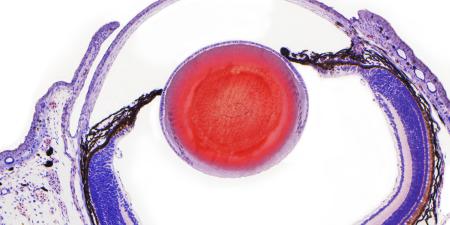The field of genetic testing is expanding to include new genetic technologies, including chromosomal microarray analysis (CMA) and whole-genome sequencing, and these technologies are increasingly being used on fetuses and embryos. Expanded prenatal genetic testing poses two main ethical challenges. When such testing is being done on fetuses, clinicians must counsel patients, who are deciding whether to continue pregnancies, in the absence of clear information about the significance of findings. When such testing is done on embryos for use in assisted reproduction, on what basis should embryos be chosen for implantation?
Chromosomal microarray analysis (CMA, also known as array-based comparative genomic hybridization) is a multiplex genomic test—one that tests a single sample of DNA for many conditions—that can detect microscopic deletions or duplications (called copy number variants or CNVs) on chromosomes. CMA permits the diagnosis of more than 100 conditions that can manifest in children as developmental delay/intellectual disabilities (DD/ID), autism spectrum disorders (ASD), or multiple congenital anomalies (MCA), as well as conditions that are relatively common but rarely diagnosed before birth, such as velocardiofacial syndrome and Williams syndrome. CMA has a 15 to 20 percent diagnostic yield among affected children across all studies [1], which, though low, far surpasses the 3 percent yield of traditional testing for chromosomal abnormalities via karyotype.
CMA has been clinically available in pediatrics since 2004. Between 2007 and 2010, statements by the American Academy of Pediatrics [2] and the American College of Medical Genetics [3] led to a practice change: standard karyotype analysis was replaced by chromosomal microarray analysis for children with developmental delays, autism spectrum disorders, or congenital anomalies not specific to a well-defined genetic syndrome. Since 2010, the American College of Medical Genetics has recommended it as a first-tier clinical diagnostic test in the evaluation of children and adults with unexplained DD/ID, ASD, and MCA [3, 4]. However, these same groups warn that CMA has its limitations and clinicians must realize that mosaicism and balanced translocations can be missed.
Prenatal Genetic Testing: Counseling in an Uncertain Situation
CMA technology can be used in prenatal diagnosis on samples obtained through chorionic villus sampling at 10-13 weeks of pregnancy or amniocentesis at 15-20 weeks of pregnancy. This has become increasingly common, especially in scenarios in which CMA’s clinical utility has been demonstrated, such as when the mother is 35 years of age or older, an increased risk has been noted on aneuploidy screening, or there is an abnormal anatomic finding in a prenatal ultrasound. A large multicenter study published in December 2012 showed that, for women who underwent invasive prenatal diagnosis and had a normal fetal karyotype, CMA revealed additional clinically relevant deletions or duplications (copy number variants or CNVs) in 6 percent of cases with an abnormal structural finding on ultrasound, 1.7 percent of cases with a 35-year-old or older mother, and 1.6 percent of cases with an elevated risk on aneuploidy screening [5]. Patients must understand that this testing on their fetus may reveal new genetic information about the parents, e.g., non-paternity or -consanguinity, which can have an impact on them and on their families and have ethical, legal, and insurance-related implications.
Another major possible challenge is that CMA can have positive or negative results or can reveal variants of uncertain significance (VOUS), variants not yet known to be associated with disease. VOUS are, thus, analogous to a small shadow on an x-ray that the radiologist does not feel is a mass but cannot be ignored. Variants of uncertain significance can be quite common in CMA, in part because large data sets that allow interpretation of findings are still being developed and often collect test results only from symptomatic children rather than recording prospective data on all pregnancies, both affected and healthy. Thus we do not know which variants are likely to lead to disease. Not all patients with a gene variant will exhibit signs or symptoms of a disorder, the signs and symptoms of people with a given disorder vary, and environmental and behavior factors can influence gene expression. All this makes it very difficult to predict the effect of a genetic change, to answer the question: is it a deleterious mutation or a benign variant?
This level of uncertainty raises ethical questions about how much information to reveal and when. Patients may need to make decisions about continuing a pregnancy based on information obtained in prenatal testing; this is clearly a highly emotionally and ethically charged situation. In a recent qualitative study of the impact of “abnormal” or ambiguous CMA results on prospective parents, Bernhardt et al. found that some women who agreed to CMA testing as “an offer too good to pass up” [6] and then obtained abnormal but uncertain results felt blindsided, and their results provoked frantic but futile searches for more definitive knowledge. For women who chose not to terminate their pregnancies after learning of the ambiguous findings, the experience of pregnancy was pervaded with severe anxiety. In cases where the variant identified in the fetus was also found in one of the parents, some parents reported that it called into question their own sense of normalcy. Some women wished they had not agreed to receive what one called “toxic knowledge” [7].
In response to these discoveries, Bernhardt et al. recommended careful counseling and extensive support; others suggest withholding information of uncertain clinical significance from patients even if they request it [6, 8, 9]. In our opinion, it would be inappropriate to withhold information that is reported on patients’ test results. And thus, pretest counseling is crucial in these situations so patients are prepared for all results.
At a minimum, providing CMA testing requires comprehensive pretest genetic counseling and posttest educational information about a large variety of possible conditions [10, 11]. But findings may indicate rare conditions about which barely any data or educational materials are available for parents, making thorough counseling difficult. It is also crucial to stress that normal CMA results do not mean absence of risk for pregnancy complications; if this point is not emphasized and such complications occur, patients can be shocked and ill-prepared.
Preimplantation Genetic Testing: Choosing Embryos
The clinical and counseling considerations and concerns raised by prenatal testing will come along to ART when whole-genome sequencing (WGS) is used to examine embryos before implantation. This may exacerbate the challenges that have been faced in fetal testing to date. In vitro fertilization has been in practice for several decades, and traditionally the embryos were selected for transfer by their appearance [12]. More recently, preimplantation genetic testing has been used to select the chromosomally normal embryos to transfer. Preimplantation genetic testing has proven valuable when choosing to identify embryos that do not carry mutations with well-known Mendelian inheritance, such as Huntington disease or Tay-Sachs disease. Preimplantation genetic testing for aneuploidy, however, has been controversial because it works as a screening test rather than as a diagnostic test, which it had initially been proposed to be; it is not always correct and does not necessarily raise the birth rate [13].
The good news is that advances in preimplantation genetic testing may make it possible to identify “better” embryos, those that will lead to implantation, a full-term pregnancy, perhaps a live birth [14, 15], or a pregnancy without certain complications such as preeclampsia. The ability to learn more about the embryo that could influence decisions about embryo quality and transfer [16] is intriguing. One can only surmise, however, that more intense genetic analysis of embryos is likely to show multiple variants of uncertain significance, and all the counseling needed for prenatal testing will need to be made available, and perhaps even expanded, for patients considering having embryos’ genomes sequenced. Will finding VOUS lead to discarding healthy embryos? Lastly, how will incidental findings be handled when performing whole-exome sequencing on an embryo?
In addition, there must be standards governing informed consent for these preimplantation tests. It is patients’ rights to know their test results and to make autonomous decisions accordingly; physicians cannot withhold test results from patients, even if they are ambiguous, and cannot choose embryos without consulting patients.
Conclusion
All in all, more intense genetic testing of embryos is in our future, as we move from expanded DNA testing of children to fetuses and finally to embryos. Clearly more research needs to be done to validate techniques so that we can provide the best options for our patients. The added information that will be provided by expanded genomic testing options is wonderful. It will likely help many couples identify problems and address them, thus leading to healthy families. But it will have side effects, including the need for parental specimens, the finding of variants of uncertain significance, and the need for more educational resources as well as genetic counselors and genetic services. A host of ethical, legal, and social issues will also be raised by expanded DNA testing on the embryo and these concerns must be the subject of thoughtful deliberation and societal debate.
References
- Miller DT, Adam MP, Aradhya S, et al. Consensus statement: chromosomal microarray is a first-tier clinical diagnostic test for individuals with developmental disabilities or congenital anomalies. Am J Hum Genet. 2010;86(5):749-764.
-
Johnson CP, Myers SM; American Academy of Pediatrics Council on Children with Disabilities. Identification and evaluation of children with autism spectrum disorders. Pediatrics. 2007;120(5):1183-1215.
-
Manning M, Hudgins L; Professional Practice and Guidelines Committee. Array-based technology and recommendations for utilization in medical genetics practice for detection of chromosomal abnormalities. Genet Med. 2010;12(11):742-745.
- Van den Veyver IB, Beaudet AL. Comparative genomic hybridization and prenatal diagnosis. Curr Opin Obstet Gynecol. 2006;18(2):185-191.
- Wapner RJ, Martin CL, Levy B, et al. Chromosomal microarray versus karyotyping for prenatal diagnosis. New Engl J Med. 2012;367(23):2175-2184.
- Bernhardt BA, Soucier D, Hanson K, Savage MS, Jackson L, Wapner RJ. Women’s experiences receiving abnormal prenatal chromosomal microarray testing results. Genet Med. 2013;15(2):139-145.
-
Bernhardt, Soucier, Hanson, Savage, Jackson, Wapner, 142.
- Berg JS, Khoury MJ, Evans JP. Deploying whole genome sequencing in clinical practice and public health: meeting the challenge one bin at a time. Genet Med. 2011;13(6):499-504.
- McGillivray G, Rosenfeld JA, McKinlay Gardner RJ, Gillam LH. Genetic counselling and ethical issues with chromosome microarray analysis in prenatal testing. Prenat Diagn. 2012;32(4):389-395.
- Reiff M, Ross K, Mulchandani S, et al. Physicians’ perspectives on the uncertainties and implications of chromosomal microarray testing of children and families. Clin Genet. 2013;83(1):23-30.
-
Klugman S, Suskin B, Dar P, et al. Clinical utility of chromosomal microarray analysis in prenatal diagnosis: report of first 6 months in clinical practice. J Matern Fetal Neonatal Med. October 23, 2013; epub ahead of print.
- Montag M, Toth B, Strowitzki T. New approaches to embryo selection. Reprod Biomed Online. 2013;27(5):539-546.
- Harper JC, Sengupta SB. Preimplantation genetic diagnosis: state of the art 2011. Hum Genet. 2012;131(2):175-186.
- Mertzanidou A, Wilton L, Cheng J, et al. Microarray analysis reveals abnormal chromosomal complements in over 70% of 14 normally developing human embryos. Hum Reprod. 2013;28(1):256-264.
- Fragouli E, Wells D. Aneuploidy screening for embryo selection. Semin Reprod Med. 2012;30(4):289-301.
-
Preimplantation Genetic Diagnosis International Society. International conference on preimplantation genetic diagnosis. http://www.pgdis2013.com/scientific-programme/conference-scientific-program. Accessed October 1 2013.



